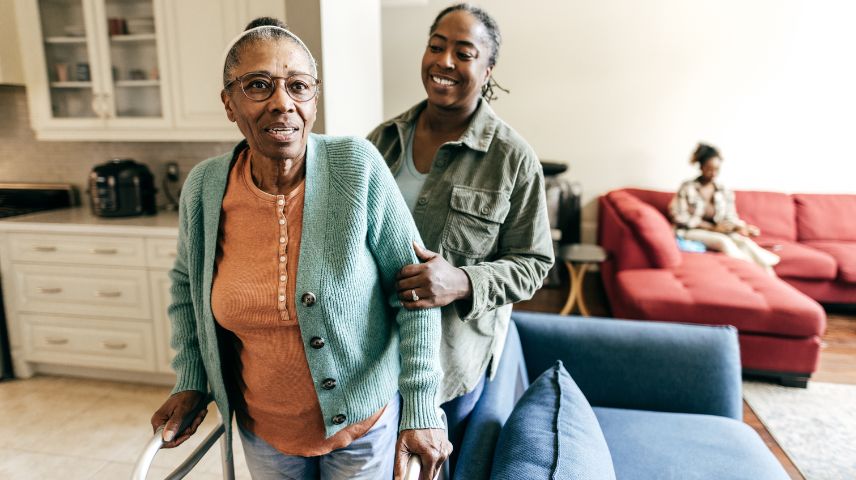Closing the Gap: Self-Directed Care in African American Communities
By Maria Perrin on April 25, 2024

Racial inequity is one of healthcare’s most glaring, expensive, and problematic issues.
Black people live 5.6 fewer years, have more than three times as many deaths associated with pregnancy, are more likely to die from cancer or heart disease, and die from diabetes more than twice as often as white people.
Perhaps surprisingly, data shows that white people have higher rates of anxiety and depression, but that’s very likely due to racial disparity and underreporting, which are additional problems.
Black people fare worse in all 16 social determinants of health for which data is available.
More than twice as many Black people live below the poverty line of $21,811 for a family of three (22% vs. 10% of whites). They’re less likely to own a home and have less wealth (net assets) than white people—$24,100 compared to $189,100. Poverty is directly linked to adverse health outcomes including higher death rates for the 14 leading causes of death.
With these stark disadvantages, you’d expect a greater need for home-based care among Black people, and you’d be right. Among those aged 55 and living in a community setting in the U.S., Black individuals required long-term services and supports (LTSS) 114% more often than white individuals. These supports include bathing, meal preparation, and other personal care for essential daily living.
So, we have an environment where many Black people need more LTSS care , but have less money to pay for it. Family and community members might be eager to help, but that requires a commitment that precludes them from holding a job, further exacerbating the economic challenges. Even if the individual needing care qualifies for Medicaid (many do), the next hurdle they’ll face is the alarming shortage of care workers.
The answer is already here.
Self-directed care programs allow that eager family member (or friend, or community member) to become an “official” care worker. The person needing support becomes their employer. The care worker works an approved schedule, tracks their time, submits timesheets for approval, has taxes deducted, and receives a regular paycheck. Now they may be able to afford to leave their “normal” job to provide services to their loved one or community member.
As self-direction program participant Anita Parris puts it:
” You can get a family member or a close friend you know and trust come in and out of your house. My son helps me to remember my medicine, he helps me clean the tub—that’s hard work for a person like me. It’s good for me and it’s good for him, because financially it’s a help.
If I didn’t have this program, I might end up in some filthy little neighborhood senior citizen building where people don’t care anything about me, and nobody will be paying me any attention. I don’t have that fear. I don’t want any strangers coming in out of my house, I wouldn’t want that at all. “
This is an ideal solution; people prefer to receive care at home rather than in a facility, and if receiving support at home they prefer to have a family member (or friend) as their care worker over strangers from a staffing agency. They’ll experience greater satisfaction, independence, and quality of life when staying in their home and community rather than in a long-term care facility, all of which can lead to better outcomes.
I’ve seen firsthand how these programs change lives, but their continued success requires adequate support and funding so they can reach all those who need them. As we look at the future of health equity, investment in the growth of self-directed care isn’t just the right thing to do (though it surely is)—it’s a proven way to bridge the care gap, safeguard patients’ dignity and self-esteem, and recognize the important role of family members who step up as caregivers.




